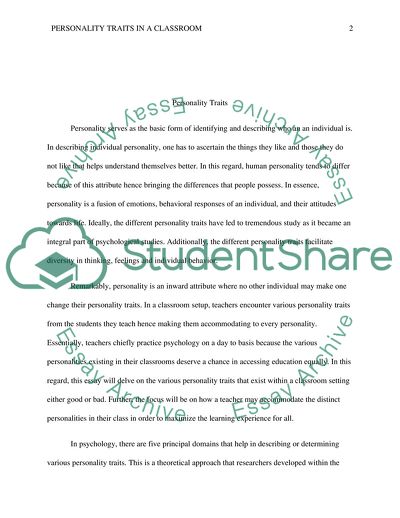Cite this document
(Personality Traits in a Classroom Essay Example | Topics and Well Written Essays - 2000 words - 1, n.d.)
Personality Traits in a Classroom Essay Example | Topics and Well Written Essays - 2000 words - 1. https://studentshare.org/psychology/1797873-different-personality-traits-and-how-the-teacher-can-adapt-to-them
Personality Traits in a Classroom Essay Example | Topics and Well Written Essays - 2000 words - 1. https://studentshare.org/psychology/1797873-different-personality-traits-and-how-the-teacher-can-adapt-to-them
(Personality Traits in a Classroom Essay Example | Topics and Well Written Essays - 2000 Words - 1)
Personality Traits in a Classroom Essay Example | Topics and Well Written Essays - 2000 Words - 1. https://studentshare.org/psychology/1797873-different-personality-traits-and-how-the-teacher-can-adapt-to-them.
Personality Traits in a Classroom Essay Example | Topics and Well Written Essays - 2000 Words - 1. https://studentshare.org/psychology/1797873-different-personality-traits-and-how-the-teacher-can-adapt-to-them.
“Personality Traits in a Classroom Essay Example | Topics and Well Written Essays - 2000 Words - 1”. https://studentshare.org/psychology/1797873-different-personality-traits-and-how-the-teacher-can-adapt-to-them.


